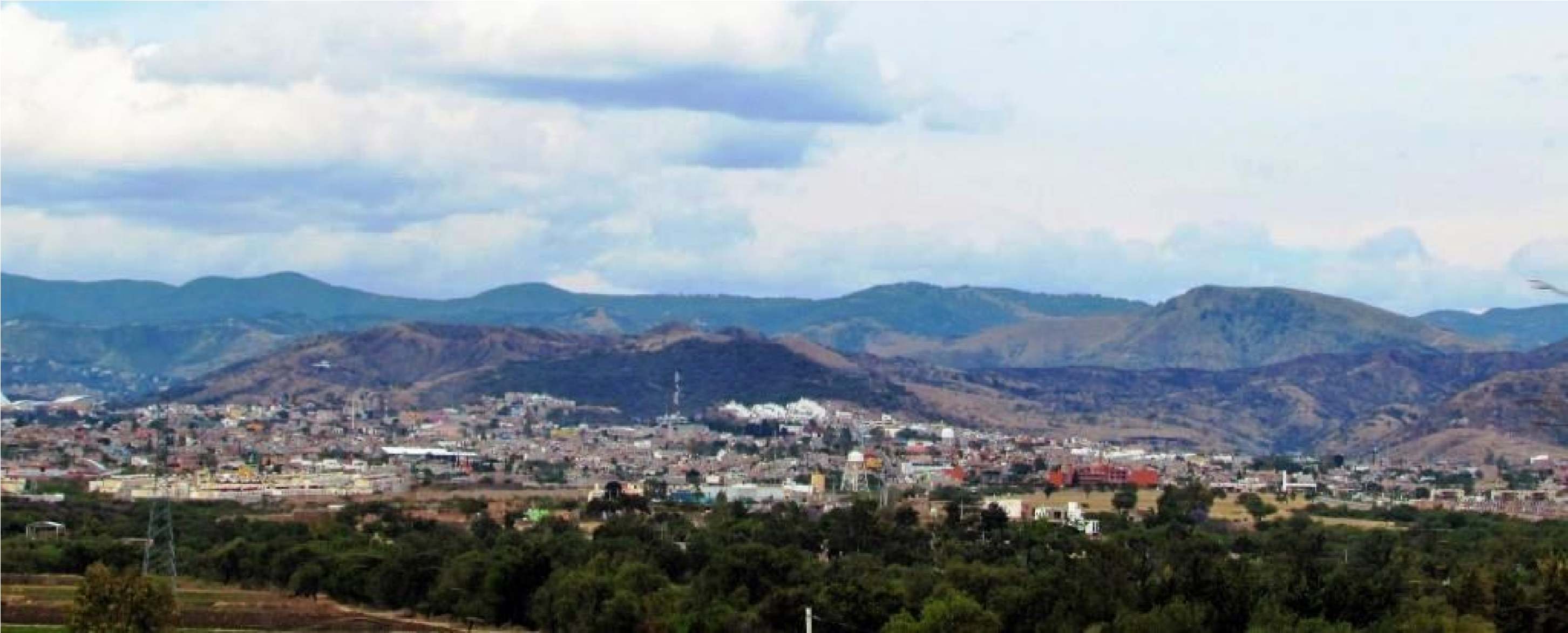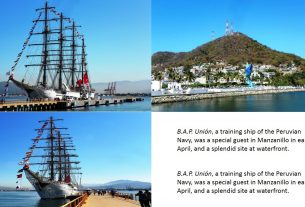By Dan and Lisa Goy the March 2019 Edition
April 3-5, 2016 (Days 88-90)
We took the lead and departed El Fuerte at 8:00 am, our Cop-per Canyon adventure behind us, and continued our journey north, leaving Sinaloa, crossing back into Sonora. After a short drive westward, we rejoined Hwy 15D at El Carrizo. Today, we only had about 356 km to travel on a good toll road, with only 2 small communities to traverse, Navojoa and Ciudad Obregon.
We arrived in the early afternoon to the Cortez Hotel on the beach. This hotel reminded us of Hotel Serenidad on Baja, but much larger and older. After getting parked, we hit the pool and later had dinner in the hotel restaurant. Time to reminisce about our Mexican adventure, share stories, have some laughs and maybe even a beer or two.
The next day we said our goodbyes, as the Kansans were headed to the Nogales, AZ crossing and got an early start. We had decided to cross at Lukeville, AZ which included an overnight in Santa Ana. Having a shorter drive (350 km), we had breakfast first and left about an hour after the others. Our destination was an RV Park called Punta Vista, owned and operated by Edgar and Anna. On arrival, we first met Mike, a New Yorker that has been travelling in Mexico for years. He was so impressed with all our stickers that he donated a bag full that he had been collecting for some time. Next, we met Edgar, a Mexican married to an American, Anna. Edgar had an interesting life story and was a gentle soul. Unfortunately, Anna was ill and did not leave the house. *Both Edgar and Anna have since passed away and Edgar’s sister Dora now runs the park. We will be stopping in again on our last night in Mexico this current season.*
Although we only had 259 km left in Mexico, we were keen to go and left before 7:00 am. We turned off Hwy 15D and onto Hwy 2. Almost immediately, we were off to Lukeville, AZ, our only stop being at Pitiquito to turn in the Vehicle Import Stickers and the return of our $400 USD cash deposit. We arrived at 8:00 am. We think they just opened and, within 20 minutes, we were on our way, José!
The Lukeville crossing was the right decision, easy to find and only 3 cars in front of us. The US Customs Officer was very friendly, asking some simple straightforward questions, “have a safe trip home”, and no agricultural inspection which is routine at the Tecate crossing. Onward, we headed for Quartzsite, AZ and the Holiday Palms RV Park. This was a longer drive, almost 430 km, and our 90-day Mexican Adventure was over.
Guaymas is a city in the southwest part of the state of Sonora, in northwestern Mexico. The city is 117 km south of the state capital of Hermosillo, and 242 miles from the US border. The municipality is located on the Gulf of California and the western edge of the Sonoran Desert and has a hot, dry climate and 117 km of beaches. The municipality’s formal name is Guaymas de Zaragoza and the city’s formal name is the Heróica Ciudad deGuaymas. The city proper is mostly an industrial port and is the principal port for the state of Sonora. The city has a well attended annual carnival, which has been held since 1888.
Nearby, San Carlos and its beaches are major tourist attractions and RV Parks.
History
Before the arrival of the Europeans, the area now known as was dominated by the Guaymas, Seri and Yaqui tribes. In 1539, two Spanish ships, the Santa Agueda and El Trinidad, arrived in Guaymas Bay, commanded by Francisco de
Ulloa, who called the area “the port of ports.”Some small Jesuit missions in the area were founded in the 1610s and 1620s, when Jesuits founded eight mission villages with the Yaqui. The Seri strongly opposed the settlement of Europeans and resisted fiercely until 1769.Juan María de Salvatierra and Eusebio Kino asked for permission to evangelize the area, which was received in 1697. In 1701, Salvatierra came to this area and established the Loreto mission somewhat inland from where Guaymas is now. To receive supplies by ship and evangelize the Guaymas Indians, the Jesuits founded another small mission on the bay, which they called San José de Guaymas. It was headed by Manuel Diaz.
The Seri repeatedly attacked the San José mission, forcing it to be abandoned and rebuilt several times. The last time this mission was abandoned was in 1759.In 1767, Viceroy Marqués de Croix ordered a major military of fensive, the Sonora Expedition, to subdue the Seri and Pima tribes. After doing so, the Spanish colonials built an adobe fort with four towers in Guaymas, initially under the command of Captain Lorenzo Cancio. Unfortunately, no traces of the fort remain today, but the San José mission is marked by a church located on the road leading to Empalme. Around the same time, the colonists formally mapped the Guaymas Bay and officially founded the city of Guaymas, in 1769, by José Gálvez in Real de Alamos, on behalf of the viceregal government. Despite the decree, no colonists settled there until the early 19th century.
Interesting that in the late 18th and early 19th century, there was only one inhabitant in Guaymas, called “Tio Pepe” (Uncle Pepe), who was said to be a drunk and a thief. At the beginning of the 19th century, the village began to be populated by farmers and ranchers who held large properties but did not have markets for their products, so the farming was on a subsistence level.
In 1811, commercial maritime traffic was authorized, and customs was established later in 1823. Guaymas received the name San Fernando de Guaymas in 1820 and ships visited the bay intermittently, with only a single customs house. In this era, it was safer to travel by sea than by land; Guaymas became an important stopping point for those heading north or south. The first commercial imports came through here in 1827. With the population of the area by European-Mexicans, the Guaymas moved to a town called Belén but eventually disappeared as a distinct group.
The port became a municipality in 1825 and during the Mexican–American War, American warships such as the Portsmouth, the Congress, the Dale and the Argos anchored here near the Pajaros Island and the Almagre Grande. The ships fired on the town and captured it, keeping it in US hands from 1847 to 1848.
In the mid-19th century, Guaymas was the target of several filibusters, or unauthorized military expeditions from foreign nations, designed to foment rebellion. One was done by the crew of the English sailing vessel “Challenge” and a French ship named La Belle commanded by Count Gastón RaousettBoulbón, who intended to take over all of Sonora. The French attacked the city on 13 July 1854, but the port was successfully defended by José María Yáñez. A firing squad executed the Count soon afterwards.
Squeegie kid at the gas station
The national government elevated the town to city status as a reward for this action in 1859. Later, in 1935, it gave Guaymas the title of “heroic city” for the same action. The municipality’s formal name of Guaymas de Zaragoza was authorized in 1862. In 1865, French ships arrived to attack Republican forces, which were forced to retreat. The French occupied the city until 1866.
By 1890, the city had 10,000 residents and was somewhat prosperous. The Carnival tradition it established then continues to this day.
On October 4-5, 1911, Guaymas was struck by major hurricane and accompanying storm surge which killed some 500 people in the city and neighborhoods.
During the Mexican Revolution, the first ever aerial bombardment of a naval target occurred just off the coast of Guaymas: in 1913, five military ships belonging to Federal forces appeared in the bay, and General Alvaro Obregon of the rebel army ordered the bombing of these ships using the aircraft and, in 1961, a pier for the national oil company, PEMEX, was built. A naval ship repair station, called the Varadero Nacional, and silos for the export of grain, called the Almacenes Nacionales de Depósito, were built in 1964.
Ferry connection with the city of Santa Rosalía, Baja California Sur, was established in 1972. The Baja highway was completed in 1973. In the 1980s, a number of private construction projects further enlarged the port, including those built by the Compañía Mexicana de Cobre, Cementos Tolteca and Compañía Mexicana de Ácido Sulfúrico. Due to changes in Mexican maritime law, a private company under contract to the govern-
of midnight of the beginning of Lent. Events are held in several locations with a number of them, such as the yearly parade, extending over multiple days.
It begins with the Quema del Malhumor or Hoguera, when an effigy of something or someone who has displeased the public is burned. Each year, the effigy represents something different. In past years, the effigy has represented the figures of Carlos Salinas de Gortari, Vicente Fox, George H. W. Bush, Mexico’s value added tax, lack of water and mostly, Donald Trump. In Day 89, our traveling companions depart 2009, the effigy was of singer Julio Preciado for his poor interpretation of Mexico’s national anthem at the recent Serie del Caribe baseball tournament. Other major events include concerts by regionally and nationally known artists, a multi-day parade with floats and the election of the King and Queen of the Carnival.
The history of Carnival in Guaymas begins after the Reform War and French Intervention in Mexico, when Guaymas and, the rest of the country, experienced a period of peace and economic development. The success of Guaymas’ port attracted a number of European immigrants and visitors. They brought the idea of organizing a Carnival similar to those celebrated in Europe. Guaymas’ first carnival is recorded in a book called El Viejo Guaymas (Old Guaymas) written by Alfonso Iberri. It was one of the first to take place in Mexico. In 1888, the first Carnival Queen was María Zuber and the first King was Alfredo Díaz Velasco. The King and Queen were paraded on the streets of Guaymas in a coach, followed by coaches carrying their entourage. The event ended with a grand ball that night.
Initially, the Carnival event was restricted to the upper classes. The lower classes watched the annual parade, but the most important events were the balls given at various mansions. This tradition continued until the Mexican Revolution. In 1913, Álvaro Obregón took control of the port, and the war devastated the area economically. Many of the businesspeople had sided with Porfirio Díaz and had to leave. The city wanted to keep the annual Carnival tradition. Various social clubs vied for control over the event, especially the naming of the Carnival Queen. The queen was determined by which group provided the most money for Carnival events, which led to widespread cheating and scandals, especially in the year 1927, when the military had to get involved to keep order.
Day 90 and we’re back in the US
The goal of the fundraising was to decorate the 13 de Julio Plaza, as the event had become public. People came to the plaza dressed in costumes, and the event drew people from neighboring cities. The event still had the yearly parades, now with floats, and both private and public balls. Masks hiding identity were permitted, allowing for the playing of practical jokes, and homosexuals were among those who took advantage of the anonymity.
By the 1960s and 1970s, the Carnival had evolved into an entirely popular event with mass participation, bringing in many visitors to the city. Sister cities such as El Segundo, California and Mesa, Arizona were invited to participate. After the inauguration of the Plaza de los Tres Presidentes, the event was moved to this larger plaza, which allowed for carnival rides and concerts by regionally and nationally known artists. The use of masks was banned due to violence. The traditional queen is now popularly elected, and the King is named the Rey Feo (Ugly King). Over time, the new plaza was no longer large enough to hold the event, and an admission charge was instituted. Security was instituted as well as checkpoints for weapons. The coronation of a Gay King was begun, and the number of floats participating in the parade grew into the very successful event it is today.

The full edition or view it online
Dan and Lisa Goy, owners of Baja Amigos RV Caravan Tours, have been making Mexico their second home for more than 30 years and love to introduce Mexico to newcomers.



